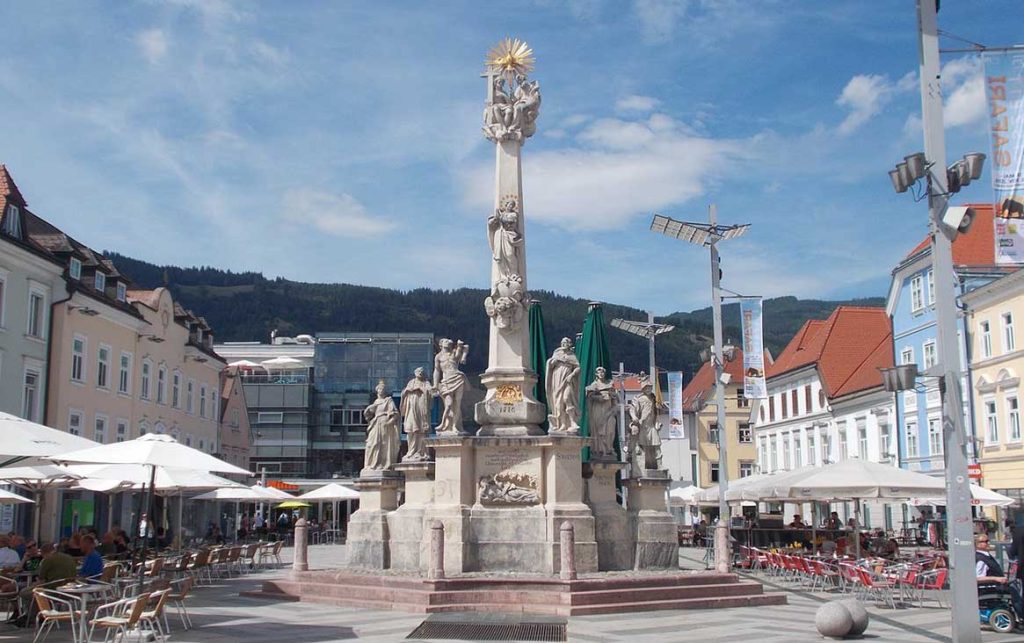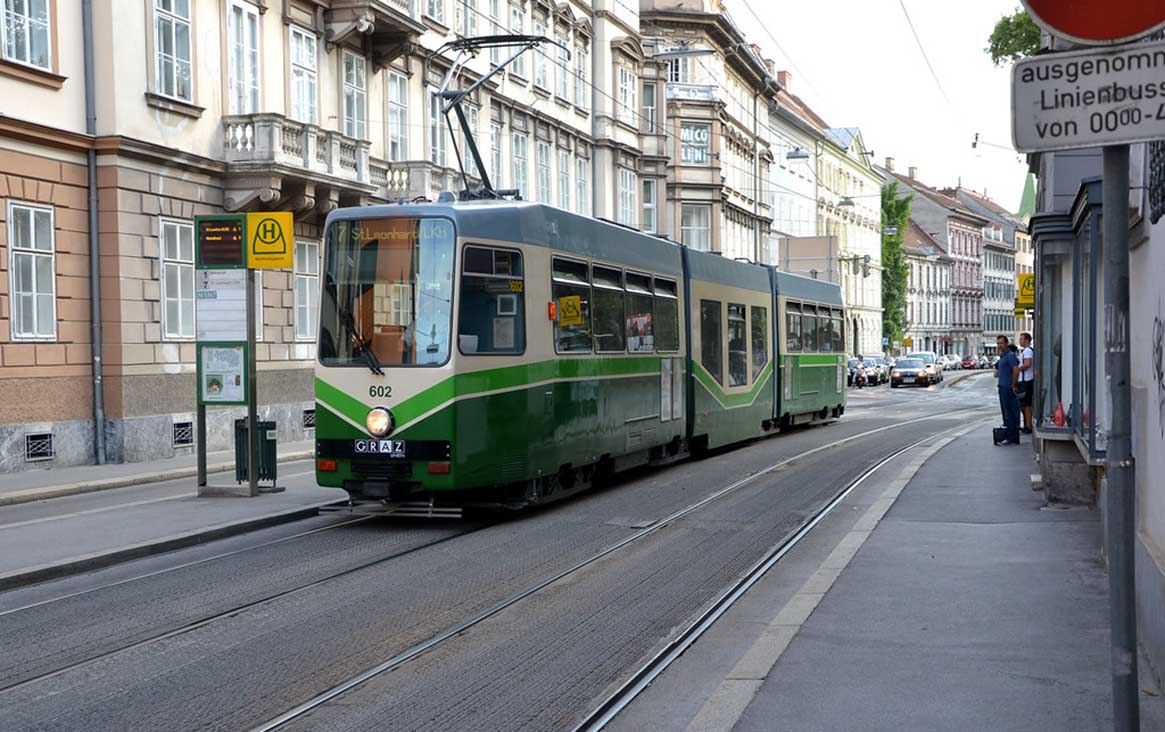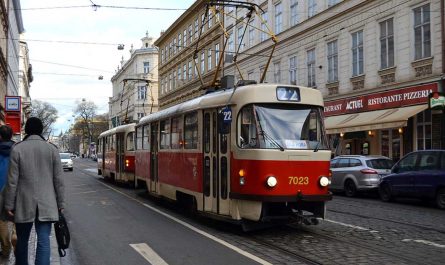Upon arriving in Graz, I was filled with anticipation but also faced some confusion about the best way to get around this city. Austria’s second-largest city may not be as bustling as Vienna, but it boasts a charming old town, a rich cultural and artistic atmosphere, and a compact, pleasant pace of life. To fully experience Graz, choosing the right mode of transportation is crucial. Graz has a well-developed public transit system with extensive tram lines; its moderate city size makes walking very convenient; meanwhile, renting a car is an excellent way to explore the surrounding natural landscapes. So which option is the most hassle-free? Which suits different travel needs?
1. Tram: The City’s Lifeline
Tram Network Overview
The tram system in Graz is the backbone of the city’s public transportation, operating for over a century. Currently, five main tram lines—numbered 1, 3, 4, 5, and 6—cover the entire city, connecting the city center, residential districts, commercial areas, and some suburbs. Trams run frequently, typically every 10 to 15 minutes, with even shorter intervals during rush hours.
When I first arrived in Graz, the clean and punctual trams left a deep impression. Whether traveling from the old town to major museums or heading out to parks on the outskirts, trams are an extremely convenient choice.
Ticketing and Pricing
Tickets must be purchased before boarding. Graz uses a unified ticketing system for both trams and buses. A single-ride ticket costs about €2.60 and is valid for transfers within 60 minutes. For multiple trips, day passes or three-day passes are recommended, costing around €6 and €15 respectively, offering excellent value.
Tickets can be purchased easily at station vending machines that support multiple languages, in convenience stores or newsstands throughout the city, or via the official “GVG Graz” app, which also provides real-time vehicle schedules.
Riding Experience
The trams have spacious interiors with handrails and seats, are well-maintained, and feature large windows perfect for sightseeing. One evening ride on line 1 left a lasting memory—the sunset light streaming through the glass illuminated the blend of historic and modern architecture of Graz, making me feel as if I was traveling through time.
Drivers operate smoothly, and the trams are quiet, making even longer rides comfortable. Inside, electronic screens display upcoming stops and transfer information, which is very helpful for visitors unfamiliar with the routes.
Suitable Scenarios, Advantages, and Disadvantages
- Advantages: Wide coverage and frequent service; affordable tickets and easy purchase; eco-friendly and quiet; easy access to old town, museums, university district, and main attractions.
- Disadvantages: Longer intervals on some routes in the evening; reduced service on holidays; possible crowding during peak hours; less convenient with bulky luggage or strollers.
Overall, the tram is perfect for short city trips and sightseeing. In a compact city rich in historic buildings like Graz, riding the tram is not just commuting, but an immersive way to feel the city’s rhythm.
2. Rental Car: The Best Tool for Freedom
Overview of Graz Rental Market
If you want to break free from city limits and visit nearby regions such as the Salzkammergut lake district, Styria countryside, or the Alps, renting a car is the best option. Graz offers many international and local rental companies including Avis, Sixt, Europcar, and local brands, mostly located near the train station and downtown.
I chose to rent a car for day trips outside Graz. Public transport is inconvenient for reaching remote mountain areas, so renting gave me complete control over time and route, making the experience comfortable and efficient.

Rental Process and Costs
The rental process is straightforward; an international driving license is required. Rental prices vary by car model, starting around €30 per day for economy cars suitable for city and short trips, with higher prices for luxury models and SUVs. Booking in advance via official websites or comparison platforms can often get discounts.
Fuel costs are extra, and Austrian gas prices are slightly above the European average. Parking within the city often requires paying for a ticket or using paid parking lots, with rates varying by location.
Driving Experience and Tips
Driving in Graz is generally smooth, with clear traffic rules. Austria requires carrying an alcohol breathalyzer device in the car, and driving under the influence is prohibited. Some parts of the old town are closed to motor vehicles, so it’s necessary to check restricted areas beforehand.
Road signs are clear, and GPS or mobile maps work reliably. Highways (Autobahns) require a toll sticker (“Vignette”), which rental companies usually remind you about.
I particularly enjoyed the flexibility of driving myself: starting early to visit nearby vineyards and returning to the city for a traditional dinner. With Austrian folk music playing in the car and countryside scenery gradually replacing urban views, the sense of freedom was unforgettable.
Suitable Scenarios, Advantages, and Disadvantages
- Advantages: Freedom of time and route; convenient for carrying luggage or traveling in groups; ideal for visiting rural and natural attractions; often the only option where public transport is limited.
- Disadvantages: Parking in the city is difficult and costly; requires familiarity with traffic rules; limited access in some old town areas requiring detours; extra costs for fuel and insurance.
If your plan is mostly to stay within Graz city for several days or focus on in-depth city exploration, renting a car might become a burden. But for visiting distant spots, it’s extremely convenient.
3. Walking: The Most Authentic Graz Experience
Walkability of Graz
The old town of Graz is compact, with well-maintained wide sidewalks and mostly flat terrain—perfect for walking. The city preserves much of its medieval charm with cobblestone alleys, baroque churches, cafes, and small plazas scattered throughout. Walking allows you to savor these details slowly.
I found daily walking to be the best way to experience the city. I could stop to take photos anytime, encounter street performers, or relax in a tucked-away café—experiences that transportation can’t offer.
Recommended Walking Routes
- Old Town Core: Start from Graz’s iconic clock tower (Uhrturm), descend through Schlossberg park, stroll through Hauptplatz (Main Square), and visit the cathedral and old city hall, popping into unique shops along the way.
- Mur River Promenade: Walk along the Mur River, passing the architecturally striking Kunsthaus (Art Museum) and the Murinsel (Glass Floating Island), enjoying the blend of river scenery and modern architecture.
- Lend District Artistic Exploration: Wander through the Lend district’s street art and creative shops to feel the youthful and artistic vibe of local residents.
Walking 5 to 10 kilometers daily was both exercise and a mental refresh for me. I recommend comfortable walking shoes, carrying water and a camera, and preparing for a feast of sights and senses.

Advantages and Limitations of Walking
- Advantages: Zero cost; freedom to stop anytime; deeper cultural immersion; environmentally friendly and healthy; best for short distances and clustered sights.
- Limitations: Not ideal in bad weather; tiring for long distances; inconvenient with heavy luggage; may be difficult for elderly or those with mobility issues.
In Graz’s summer evenings, walking is safe and pleasant, and nighttime strolls have their own charm. In winter, plan walking distances based on weather.
4. Combination of Transport: Adapt to Your Needs
For most visitors, a flexible combination of walking and tram use is the best approach. Use the tram during the day to reach farther attractions quickly, and walk around the city center and nearby areas to explore deeply. Walking is also convenient for evening meals or night outings. If your itinerary includes countryside or alpine day trips, renting a car is a necessary supplement.
My trip followed this pattern: using tram and walking to navigate Graz city, and renting a car on weekends to drive to vineyards in Dürnstein and hiking in the Styrian mountains—experiencing the perfect balance of urban life and nature.
5. Practical Transportation Tips
- Ticketing: Tickets must be purchased and validated before boarding the tram; inspections are strict. Download the official GVG Graz app for easy route planning and online ticket purchase.
- Language: Most tram drivers and rental company staff speak English, so communication is smooth.
- Safety: Graz is generally safe, but when walking at night, be cautious in poorly lit areas.
- Luggage Storage: Graz train station and some large hotels offer luggage storage, convenient for day trips with light packing.
- Rental Insurance: Always confirm insurance coverage when renting a car to avoid unexpected risks.
Graz has a comprehensive transport system, and due to its compact urban layout, walking and trams satisfy the vast majority of travel needs. Trams serve as the city’s main transport—economical and eco-friendly; walking brings you closer to the city’s unique blend of history and modernity; renting a car opens unlimited possibilities for excursions to natural wonders.
Choosing the right mode depends on your travel priorities and itinerary. For a hassle-free, immersive city experience, tram plus walking is the best combo; for multi-destination or time-pressured trips, renting a car offers unmatched flexibility. No matter what, Graz’s charm ensures every transportation method becomes a memorable part of your journey.



